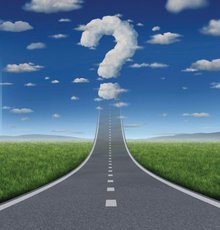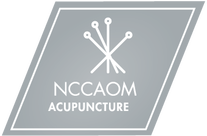 Source: Pexels.com Source: Pexels.com Throughout the course of history, there has long been a connection between martial artists and medicine. Traditionally, it was not uncommon to find a martial arts master who was also a physician or, at the very least, a highly-skilled healer. The reason behind this is simple being that by understanding how to control the mind and body in either role, one can also understand how the mind and body control an individual. Probably one of the most famous martial arts masters was Huang (Wong) Feihong who "developed a reputation as a peerless fighter and skilled physician". He also "founded a clinic known as Po Chi Lam, 'Precious Iris Woods', [which was] a reference to his skill with herbal medicine". Another notably skilled martial artist and physician was Hua Tuo, who was arguably the most famous doctor to have lived during the period of the Han Dynasty in China (206 BC-220 AD). As a physician, Hua Tuo would perform surgeries using anesthetics made for herbs. Additionally, he was renowned for his development of a series of health exercises that are based on the movements of animals and the principles found in martial arts traditions (Wu Qin Xi Qi Gong or Five Animal Play Qigong). Marshal Yue Fei, a famous military leader, is another perfect example of martial artist/physician who created the famous Eight Brocades Qigong Exercise. Learn these two famous Qigong forms online via the Personal Mastery and Growth Academy (Contact me for purchase details) Like most things over time, these arts transformed into new styles adapting to the changes of society and the invention of new types of weaponry, e.g. firearms. These transformations, together with the secrecy of familial styles of martial arts, the illiteracy of legendary masters, as well as the Cultural Revolution, slowly divorced these two arts that were once seen as inseparable. In today's society, there is a clear disconnect between martial arts and medicine in both education and in practice. I can recall learning, as part of the curriculum, Tai Chi and Qigong when I attended Oriental Medicine school. At the time, with a background of over a decade of practice in these arts, I entered the classroom with a sense of humility together with an old phrase I heard repeatedly during my training, "Any three people walking, [at least] one of them is your teacher." Needless to say, I was ready and willing to learn. Much to my surprise, upon the completion of the first set of classes, I can still recall the speed at which my jaw hit the floor. I was absolutely dumbfounded by how superficial and dissociated the information was from medicine, let alone martial arts. What happened to the knowledge that had been so powerfully transmitted through the ages of military warfare and medicinal advancement? Given this experience, I unfortunately have anything but high hopes for the remaining programs across the country. Even if the programs are strong in terms of the quality of information being disseminated, there is still an absence of knowledgeable Oriental Medicine practitioners being produced who can utilize martial arts and its principles with a medicinal approach. All disappointment aside, I do have faith that there still exists a strong connection between both martial arts and medicine. How? Simply because when people practice, they notice positive changes in their bodies and their minds. Additionally, the two arts themselves are based in theories and principles that align perfectly together. And personally, as an acupuncturist and a seasoned martial artist, I can see a clear connection between these two and apply them accordingly in my practice. Simply put, martial arts is an exchange between two or more people when being applied, whether fighting or "playing". It is also an exchange between one's external environment and internal environment. Medicine is the art that facilitates these exchanges by correcting them when they cannot be completed innately on their own. The natural laws of these exchanges were discovered through the observation and understanding of nature's affect on the health of living beings. Therefore, by expanding upon this knowledge and applying it, martial artists and physicians can potentially marry these two art forms once again. I suppose the title of this blog could also be reversed: Acupuncturists were also born to practice martial arts. For from the branches of the tree where martial arts and medicine coexist, they feed from the same root, bear the same fruit, and nourish all those who consume it. We as martial artists and Oriental Medicine practitioners are their gardeners as well as their guardians, and their survival depends solely upon us to keep them together. If you would like to learn more about how to use martial arts together with Oriental Medicine, you can contact me anytime via email or social media. You can also join our Tai Chi class on Saturdays or send you kids to our Martial Arts class on Sundays. Reference: Bisio, Tom. A Tooth From the Tiger's Mouth. New York, NY: Fireside, 2004.
0 Comments

20 years ago, I made a choice that would change my life forever. I chose to enter a world that balances itself between the polarity of Yin and Yang; rotates on an axis called the Dao; and requires of its inhabitants to willingly "eat bitter", drown ourselves in blood, sweat, and tears, and risk masochistically bruising and injuring our bodies on a daily basis. To others, it is a world that sounds more torturous than peaceful. Regardless, this world is where many thrive on the nourishment of wisdom, develop a persevering attitude, and establish lifelong brother/sisterhoods. This is the world of Martial Arts.
How We Arrived Here
Prior to the 20th century, people knew the martial arts world as being one of great discipline, honor, respect, humility, and unquestionable devotion. Not only was it a way of life, it was also an employable service and a reputable form of business that brought strength, stability, and protection to local villages. Additionally, if a well-known martial artist was teaching in a specific area, it would draw attention far and wide attracting students from across the country ultimately bolstering the local economy. Consequently though, the downfall was the ensuing invitation for trouble through open challenges and "wars" between martial arts families/styles. Even to this day, the plague of open challenges is creating a rift between martial artists forcing practitioners to question its relevance, effectiveness, and overall place in today's society.
Throughout the 20th century, the martial arts world took a severe beating during specific times of global transition (for example, World Wars I & II, the Great Leap Forward, and the Cultural Revolution) forcing people to flee, go into hiding, nearly starve to death, or even be killed. However, thanks to the latter part of the 20th century, and with the help of Hollywood (and dare I say westernization), the world of martial arts continues to spin, but not at the same velocity as in the past. Today, many martial artists attempt to run their schools in a similar manner as schools of the past by kowtowing to their teachers, passing on knowledge to those who are "worthy", and carrying forward the lineage of which they have been accepted into. I myself being "raised" in this traditional and ritualistic manner treat my Kung Fu family in a similar way. As described later in this article though, these practices have not always had a positive effect on the evolution of martial arts. A Lesson from HistoryAn important lesson taught throughout history is that everything must come to an end. 
In all of my martial arts training, one of the most important lessons I have learned is how not to hold on both physically and mentally. Without learning this lesson, one's opponent immediately gains the advantage. So, why is it that so many martial artists cannot demonstrate an understanding of this lesson by clearly being unable to let go of the past? Why have they not accepted the fate of the martial arts world and begun the next stage of its evolution for the sake of the next generation? A disappointing truth is that our world can no longer thrive on ancient methods and traditional ways of thinking and acting. Not because they don't matter, but because much of the rest of the world is moving forward and shedding the parts that no longer serve their current direction (including certain aspects of martial arts). Why are we not doing the same?
Martial arts was brought to life by ancient wisdom, cultural transformation, and the gifts of nature. This life will soon expire if we do not begin to take action and shed the skin that has been peeling off for the last century. Therefore, I am urging you and every other martial artist to think seriously about the future of martial arts because the unwillingness to accept one's fate is futile, guaranteed. Furthermore, many years from now, you and I will be looked upon as the ancients of martial arts, and we will either be praised or we will be criticized for doing (or not doing) what was necessary. So, better than history coming to an abrupt "end", how about we look at it as a "new beginning". Ask the Right Questions
Here are some questions we can begin to ask ourselves regarding the fate of the martial arts world:
These types of scrutinous questions, as painful as they might be to answer, have the potential to help us design a new landscape for the sake of adapting to the needs of modern society. Today, the average student will rarely devote time to diligently practicing the movements they are taught. Nor will they spend much time studying the wisdom intricately woven into each action. Many teachers respond to this by teaching form after form without enforcing the need for repetition that allows students to understand more than just the sequence itself. This is proof that the world of martial arts has transformed based on the needs and wants of the student, not of the teacher, nor of the traditional style being taught. Additionally, the levels of discipline, motivation, and devotion no longer resemble those of the past. And due to the unwillingness to accept this unfortunate fact, many martial arts schools' enrollment numbers have dwindled, while at the same time, membership costs surge leading to survival being the only option. Consequently, this choice of survival has caused the sacrifice of something once considered to be sacred; tradition. Thus, the martial arts world now revolves around such things as colored belts handed out faster than Bruce Lee's one-inch punch. So what truly is the best way to train students for the sake of the future, and who should be the target clientele from here forward? Should we only focus on rigorously training the body? Should we limit ourselves to building a curriculum that requires only memorization skills for the forms which are taught? What truly is the best approach? In any stage of transition, there are always more questions than answers. Moreover, if you think you have the answers to all of the questions I have been asking, then you have not yet learned to listen. Have a comment on what you've read so far?
|
Posted here are...inspirational ideas on healthy living through eastern medicine, optimism, and possibility through empowerment. Archives
March 2020
Categories
All
|
HOURS & LocationMondays-Thursdays 5:30-6:30pm (Tai Chi & Qigong only)
Fridays 5:00-6:00pm (Tai Chi & Qigong only) Saturdays 1:00-6:00pm (Acupuncture only) |
CONTACT Us |





 RSS Feed
RSS Feed



